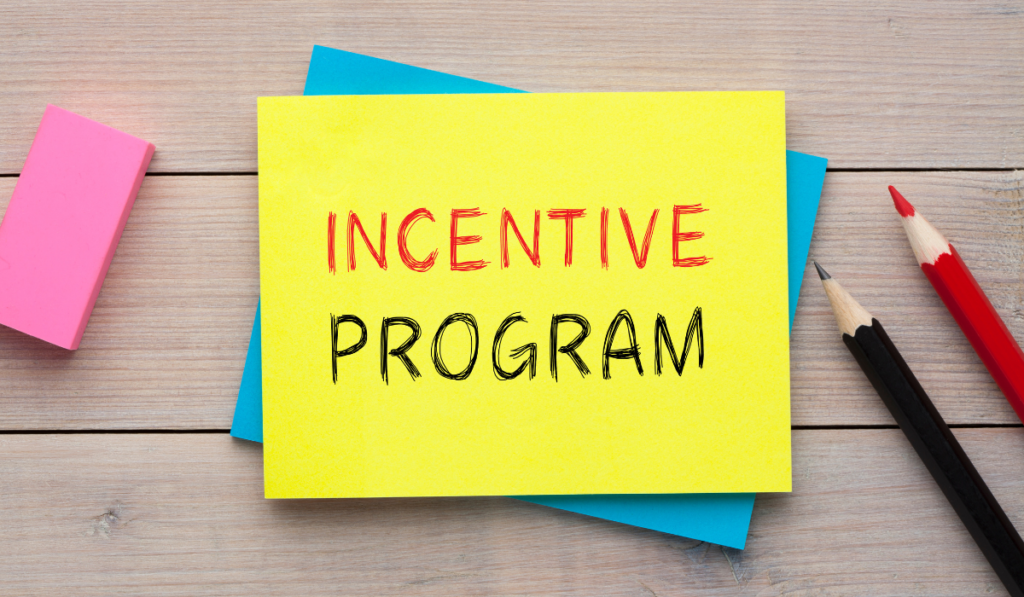Contents
- 1 What Are Wellness Program Incentives?
- 2 Types of Wellness Program Incentives
- 3 Why Do They Matter To Employers?
- 4 How To Implement Wellness Program Incentives?
- 5 When To Develop Wellness Program Incentive Structure?
- 6 How To Establish Well-Designed Incentive Structure?
- 7 Disadvantages of Wellness Program Incentives
- 8 A Word From Mantra Care
What Are Wellness Program Incentives?

Companies want to create a work environment that is healthy and sustainable. One way they’re doing this is by incentivizing their employees with discounts on insurance premiums or other benefits. Wellness Program Incentives are a powerful way to improve the overall health of employees and their well-being. It also increases loyalty and company morale.
Types of Wellness Program Incentives
There are different types of wellness incentive programs that employers set up. The three main types are:
Gym Memberships
Gym memberships can be an incentive to get employees to stay in shape. These incentives work well if the people you employ are at risk for obesity. It is if there is a need for weight management in their region. They might also want this type of incentive if they’re not happy with the fitness center at their workplace. This is because it could be hard for them to find time to go outside of work hours.
Health Insurance Discounts

Health insurance discounts are another option that companies use when they offer healthcare benefits. This could be used when an employee wants more information on cancer screenings or other preventative care. They might also be interested in discounts if they want to get insured under a spouse’s plan, etc.
Cash Prizes
Cash prizes are another incentive that many companies offer their employees. It is in order to promote wellness program. It can act as an extra boost when people are trying to lose weight. This helps to quit bad habits like smoking.
Paid Leaves

Paid leaves are the final incentive that companies provide. They offer their employees a few days off if they meet certain goals. These are in terms of weight loss, visits to the gym, etc. This is a nice bonus that can help them stay on track with their wellness program. It helps to handle any stress they might have from work or home life.
Gift Cards

Gift cards are an incentive that many people enjoy. They might be given for any number of wellness-related activities. For example, if employees lose a certain amount of weight, they might receive gift cards to their favorite healthy restaurant in town. These can be from online retailers like Amazon or iTunes.
Gift Merchandise
Gift merchandise can also be an incentive. Whether it’s a fitness tracker that they have been wanting or a new pair of gym shoes, employees will love receiving these items as a reward. It is for making progress with their wellness program.
Rewards and Games
Recognition and rewards are other types of incentives that many companies offer. For example, they might publicly recognize an employee who has lost the most weight or brag about them in a company newsletter, etc.
Another way to motivate employees is by creating games where they can compete with their coworkers for wellness-related prizes. If you’re trying to encourage your employees to eat healthier, you could start a lunchtime challenge. It is where people try to guess what was put on their sandwich each day.
Generosity
There are other options where companies just choose to be generous. This is when they give their employees extra incentives without any strings attached. They might offer gifts at the holidays or even random giveaways. It is when you have positive news to share in the workplace. It is about your employee health and wellness programs.
Trips and Tours
If your company is doing very well, you might want to offer employees a trip as an incentive. Whether it’s a cruise or a staycation. Employees can also be rewarded with tours of the corporate headquarters and lunch at the CEO’s home.
Spa Services
Spa services are another type of incentive that many companies choose to give. Your employees might love an afternoon at the spa. This is where they can pamper themselves, have their makeup or hair done, etc. This is one of those incentives that many people would enjoy. It is on no matter what age group of your employee.
Camping Trips
Camping trips are another incentive that might appeal to some employees. This can be a great experience where they enjoy the fresh air and commune with nature. Employees will love getting away for a weekend. It is just time outside of work to relax.
Contests
One final type of incentive that companies provide is contests exclusively for their employees. One example could be an office weight loss contest where people compete in teams or individually to see which team or individual loses the most weight in a certain period of time.
Why Do They Matter To Employers?
These are some points that why does it matter to the employers:
- The employer will receive decreased absenteeism rates due to improved employee wellness. A company can have a higher number of healthy employees who don’t require sick days or time off from work. This is because they’re not getting sick from being run down, they will have better attendance levels. This means that you’ll have fewer gaps in coverage when an employee can’t make it in. This is something that every business owner wants.
- In addition, when employees feel supported by their employer they tend to be happier and more productive at work. When you incentivize employees with reduced insurance premiums or other incentives, you’re providing them with the support. This is what they need to feel appreciated and fulfilled.
- Having a well-designed wellness program with incentives will also help your company’s bottom line. When employees feel better and understand how much their employer cares about their wellbeing, they’ll be more motivated. They can go above and beyond for the business. This means producing positive outcomes for work projects, making smart business decisions, and promoting the company in a way that drives growth. In turn, this will lead to improved revenue levels, which is always a good thing.
- Employees tend to be less stressed out when they know that their well-being is being prioritized by employers. This can translate into lower healthcare costs. Employees won’t require any sort of medical treatment that could easily be prevented through a wellness program.
How To Implement Wellness Program Incentives?

There are several different ways that companies initiate their wellness programs with incentives :
- They might offer discounts on insurance premiums or other benefits such as gym memberships.
- One of the most popular options is offering reduced premiums for group life insurance, long-term disability insurance, and/or health insurance. This incentive encourages employees to take care of their physical and mental well-being. It is by paying for perks like gym memberships or personalized coaching sessions.
- Another option is to reward employees with gift cards or cash bonuses. For example, companies can sign up for a wellness program. This includes incentives and offers employees $50 cash if they submit their blood pressure and cholesterol results.
- Employers can also implement wellness programs with incentives by rewarding employees. It is for completing certain preventative health screenings or disease management activities. These are such as quitting smoking or attending an educational webinar on the dangers of high-stress levels.
- There are many different options when it comes to implementing a wellness program with incentive structures. The important thing is making sure that you’re always doing what’s best for your business. It should also take care of the health of your employees.
When To Develop Wellness Program Incentive Structure?
- Some companies start incentivized wellness programs. It is in order to increase attendance rates in existing company-wide benefits plans. Others implement them in preparation for upcoming health care reform.
- If you’re a smaller company, think about whether your business would benefit from developing an incentivized wellness program. Know if there are already other great benefits that employees appreciate and utilize.
How To Establish Well-Designed Incentive Structure?
It’s important to understand the specific needs of your employees. This is so that you can provide them with options for incentives. These will truly help them feel supported and valued by their employer.
- If you don’t offer healthcare insurance, consider asking your employees what they need to improve their well-being. They might say something like gym memberships or personal training sessions. You can show that you’re listening. It is by offering these types of incentives through a wellness program.
- If you already provide your employees with insurance, look at their medical claims. This is to determine which types of preventative care they would like more information on. For e.g. cancer screenings vs. smoking cessation.
- Some employers let their employees choose between different plans. Some offer their own set of perks and incentives. Others work closely with an insurer to customize the incentive structure. It is based on office demographics or employee needs.
- Remember that wellness program incentives should not just benefit the employees. Your business will also benefit from increased productivity, better morale, and lower rates of employee turnover.
Disadvantages of Wellness Program Incentives

While it might seem like the world is moving towards incentivized wellness programs, there are some who argue against them. Some points are
- Some think that these incentive systems are fundamentally unfair to some employees. They are those who have pre-existing medical conditions or may have been unable to adhere to a dietary plan. These are for reasons beyond their control.
- There’s also concern about possible legal repercussions. It is in cases where employers establish a very specific incentive structure with expectations. These expectations are how much weight an employee needs to lose each month, etc.
- Some people argue that wellness programs have a negative impact on employees. These are particularly if they live in low-income areas or have lower levels of education. For example, some wellness program incentives e.g., gym memberships. These might be out of reach for people who can’t afford initiation fees or monthly dues.
- Other opponents also claim that incentivized wellness programs encourage unhealthy living instead of discouraging it. They believe that offering incentives to quit smoking, lose weight, etc., is counterproductive. This is because it may cause employees to neglect their personal well-being. This is when they don’t meet certain targets or milestones during specific time periods.
- Finally, there is concern about how employers will implement and monitor these incentive programs. It is in order to make sure that employees are truly adhering to the wellness plan.
- Employers might need to hire a third-party organization. This is to help them keep track of program goals. It can develop an online system, which can be expensive.
A Word From Mantra Care
Incentivized wellness programs have been proven to be beneficial for many companies. You shouldn’t feel obligated to use them if they don’t match your company culture or the needs of your employees. In fact, there are several alternatives to incentivizing wellness programs. it’s important to consider all of the available options. This is before making a decision about what wellness programs are right for your business.
Do you want to keep your employees happy, healthy, and productive? Join our employee assistance program and get a healthier workplace.


